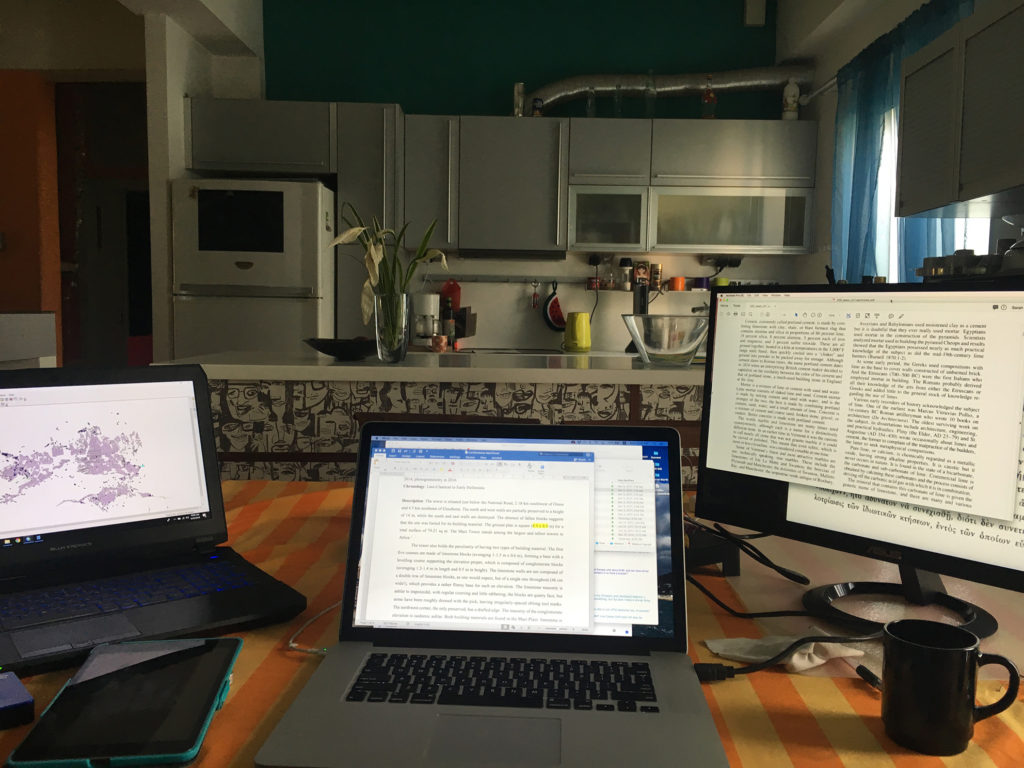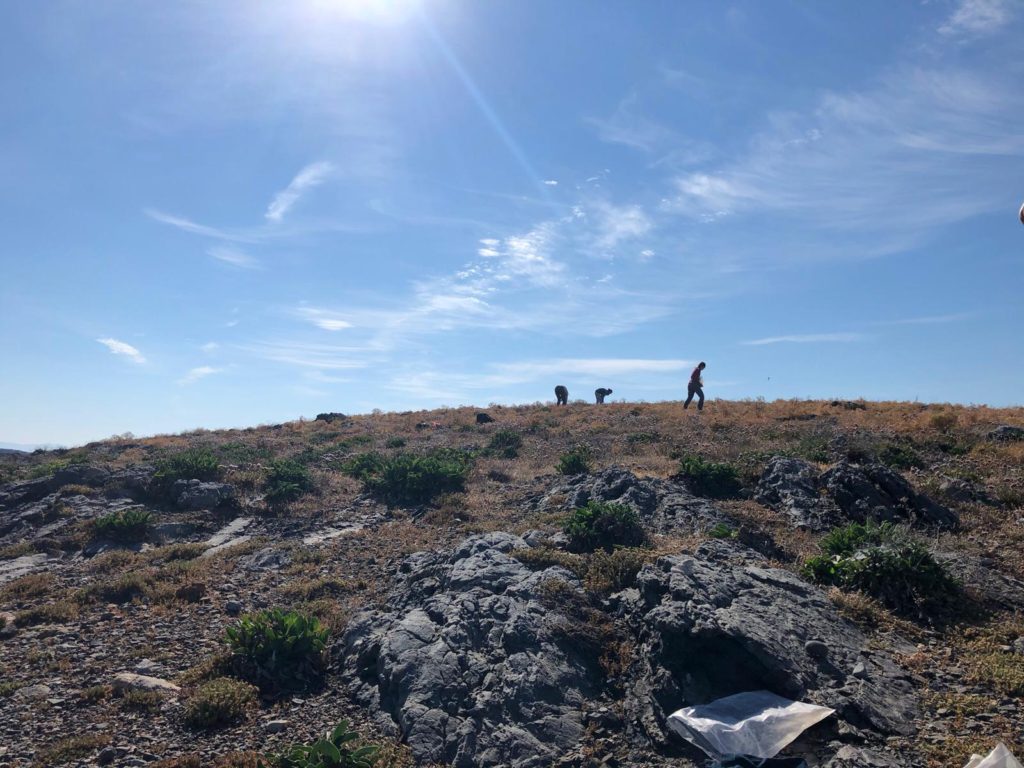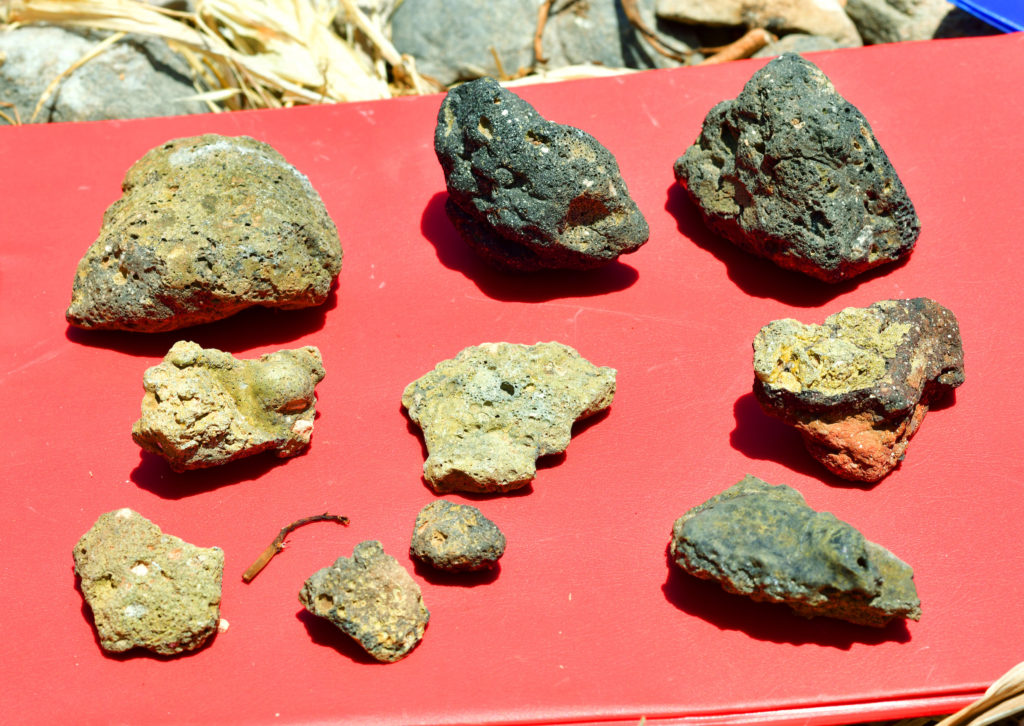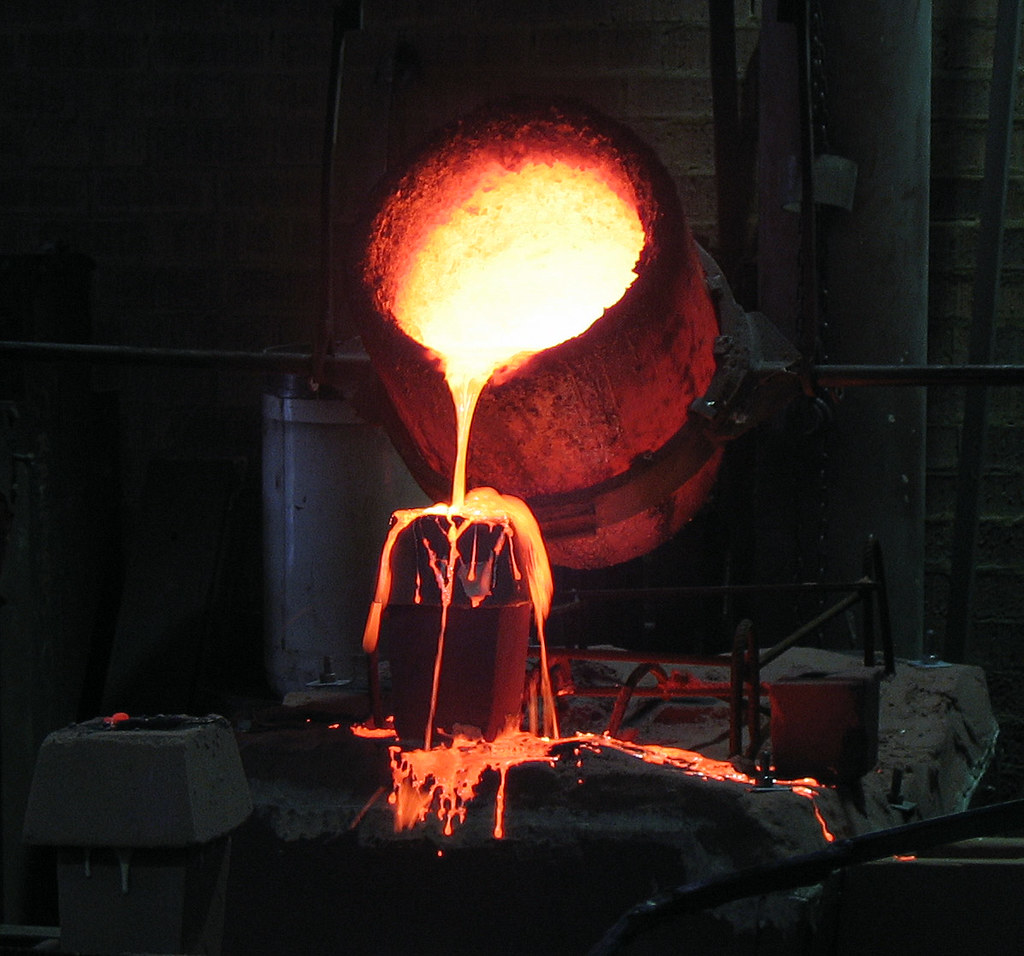In the weeks since the last remains of the BEARS 2021 team dematerialized back out into their constituent home coordinates in the ‘real’ world, I’ve spent most of my time communing with the non-human aspects of the project: all of the data, ideas, and photos that we produced during the five weeks of the season. While most members of the team roll off to other projects or activities for the rest of the summer once we finish up, it’s up to the beleaguered director to take care of end-of-season business, from double-checking that everything is in order in the database and GIS to writing up reports and publications detailing the work we did in the field. It’s always sort of sad to bid farewell to the wonderful daily routine of satisfying outdoor work and camaraderie that the fieldwork season brings, but with BEARS that sadness is tempered by the incredible quantity and fascinating nature of the evidence we’ve collected. Both in 2019 and in 2021 it’s been a pleasure to get the old intellectual engine fired up in the aftermath of the season and start trying to figure out what kinds of new stuff we can say about the past based on the season’s work.

This season we spent the majority of our time conducting gridded collection on Praso, the nearest-to-shore and most easily accessible of the four uninhabited islets in the bay. Of course Praso was always one of our targets for survey in the project, but I wouldn’t say it ever loomed large as a big priority. Part of the reason we decided to move Praso up to the front of the schedule this year was because most of our Bronze Age inclined team members were not able to join us due to continuing pandemic complications, and I felt strongly that we should try to “save” the remainder of survey on Raftis (which we already know is a big Bronze Age site) for 2022, when they’ll be back with the team.
In other words, we decided to survey Praso this year because we thought it wouldn’t be all that great or interesting! My idea was partly to kill time while also being productive until the whole team could return in 2022. Praso seemed like a good substitute for Raftis from this point of view – we wanted to stay out on islands as much as possible so we’d be safely socially-distanced from the local community during work; Praso seemed small enough that even with just the six of us that were out in the field for most of the season, we’d be able to finish it all in 2021; and there was supposedly plenty of Late Roman pottery on the surface, which suited our team of mostly non-Prehistorians, especially Joey and Rob, the two project Romanists who made up about 20% of the field team for the first couple of weeks!

Grace already wrote a nice post about the early days of our survey on Praso, so readers of the blog already know that we actually ended up finding A LOT more than just Late Roman pottery on the islet! This was a big surprise, because Praso has essentially zero presence in existing literature. Apparently nobody has really noticed or cared that the density of surface finds on this low-key little spit of land is genuinely astonishing. If we account for limited visibility, our data suggest that many of the 20×20 meter survey squares on the islet contained upwards of 10,000 individual artifacts…far more than what we saw on Raftis, which up until 2019 was the densest, largest surface concentration of material I’d seen in 15 years of survey in Greece!
What’s more, the range of periods represented on Praso is very broad, as Grace noted: it is a very, very diachronic islet. This is notably highly against the trend for the area – the sites we’ve investigated so far have tended to see intense activity, but only in 1–2 periods: Final Neolithic/Early Bronze Age for the Pounta peninsula, LH IIIC & 6th-7th century CE for Raftis, the 3rd century BCE on Koroni. But on Praso there is something from nearly every period that’s represented in the bay overall, from earlier prehistory to Ottoman and WW II era artifacts.

It is a little funny that what is so far the only place we’ve seen around Porto Rafti with consistent human exploitation through time is also seemingly the ONLY place in the area that archaeologists have basically never spent any time poking around. My Bronze-Agey advisors and mentors have all swam out to Raftis islet – long documented to have some kind of LH IIIC pottery presence – and even desolate Koroni islet; there are plenty of little discussions of sherdage and even burials on Raftopoula in various reports. But Praso has somehow slipped under everyone’s radar. Well, except the many people that park their boats next to the protected south side of the island to swim all summer, of course. As usual, the BEARS team had a sort of daily dose of cognitive dissonance, wandering past lackadaisical sunbathers to spend hours and hours laboriously sorting through huge quantities of largely ignored but exquisitely preserved and varied archaeological remains.

Of course, the big question on our minds now is just what was so appealing about little Praso that made it such an attractive spot for people to descend upon from the Final Neolithic to the Late Roman periods.
It is immediately apparent from our survey finds that one of the reasons people spent time on Praso must have had to do with its affordances for craft production – amongst the most unexpected finds from the Praso survey are significant quantities of waste from ceramic and metal production! So far we can’t say too much about the metallurgical activity, since we haven’t been able to do much analysis or contextualization of the slags and ores, etc., but our heads are already spinning with the analytical directions towards which the evidence for ceramic production are leading us. First, it is clear that a regionally important type of LH IIIC pottery was made on Praso – the fabric of the wasters matches the so-called White Ware that is abundant at the cemetery of Perati and on Raftis, as well as at other sites up and down the Euboean gulf. The number of well-documented LH IIIC ceramic production sites in all of the Greek mainland can be counted on one hand, so this is a very rare and exciting discovery. Second, it seems that the many tiles we documented on the Koroni peninsula, dated to the Classical/Hellenistic period, were ALSO being manufactured on Praso. Finally, the same probably goes for the many Late Roman tiles from Raftis. The fabrics of the waste products and the finished products across the sites all match really nicely, at least on first inspection. I had never, ever seen tile wasters in a survey before Praso, but we have collected quite a few – just one of many wild surprises Praso had in store for our little BEARS crew this June.

Suffice it to say that there is a lot to think about as we try to put together the pieces for our 2021 season report. Aside from all of the evidence for craft production, we have the normal embarrassment of finds to deal with –thousands of sherds of well-preserved pottery, a few hundred lithics, plus 300+ “other” objects, including groundstone tools (and even one groundstone vessel!), many Bronze Age figurines, loomweights, lamps, glass, metal objects of bronze, iron, and lead…not to mention a haul of worked, often-perforated terracotta mystery objects that might have had something to do with craft production (or…with the well-documented local tendency of perforating almost everything, which the team knows very well).
One of the appealing parts of archaeology is that you really never know what you will find on any given day or in a given season, let alone from moment to moment. This creates a certain kind of chaos in one’s scholarship, because you might head to a region or a site hoping to find one thing, but the archaeological record has another idea in mind, and then you just have to deal with it. Some find this chaos to be frustrating, but in my experience it has the very salutary effect of keeping your scholarship and ideas dynamic and fresh. For example, when I went to work in the Mazi Plain back in 2014, I was hoping we would find some sites that dated to my major period of interest, the end of the Late Bronze Age and the Early Iron Age. Instead there was nothing at all in the plain from the entire period between Late Mycenaean and Archaic – so I ended up spending most of the project obsessively documenting a Late Classical fortification. This ended up constituting several summers of quite satisfying and enjoyable fieldwork, and I learned a lot, both about documenting a massive fortress and about historical fortification architecture!
A sort of funny reversal of that trend, though, seems to be happening for me at BEARS. When I started thinking about working in Porto Rafti my main area of research interest was long-distance trade and exchange in the Late Bronze Age; I was primarily hoping we would recover remains of a settlement associated with the import-rich cemetery of Perati, with the idea that these would shed light on the nature of the region’s engagement with the eastern Mediterranean. However, over the last two years, I’ve become much more interested in the anthropology of craft production, especially thinking about how to reconstruct the roles and identities of craftspeople within society, and much LESS interested in the bigger system of Bronze Age trade. So I guess it is a little bit supernatural-seeming that the archaeological record is being so accommodating in that regard. In addition to lots of cool evidence about trade and interaction, of course, now we have a whole amazing assemblage of craft production remains! Either I’m just really lucky, or karma has something pretty terrible in store for me soon to make up for this serendipitous archaeological turn of events.

That doesn’t even take into account my other obsession in life – Soviet propaganda art, which of course very often features the most captivatingly semi-hagiographic imagery about the glorious nature of all FIRES OF INDUSTRY. So that has really set me up to be uniquely qualified for designing a sweet BEARS 2021 t-shirt/logo that captures the essence of our discovery on Praso.
Long story short, I can definitely say that Porto Rafti is the best place a person like me could ever could have chosen as a location to run a survey project! We’ll have more to say about the serious sides of interpreting the evidence soon, but for now let us all take some time to bask in the newly-discovered glow of Praso the Great.

